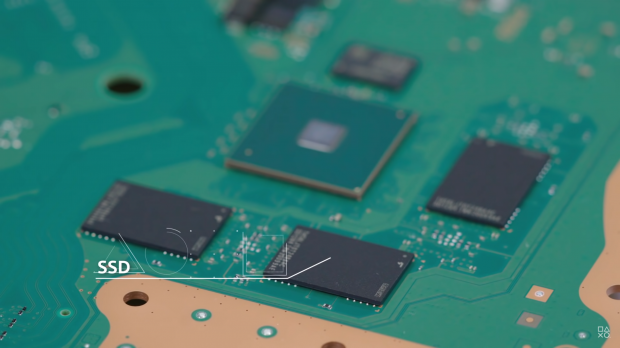The PS5 only has 667GB of usable space, but owners will soon be able to expand internal storage with the same high-end SSDs used in PCs. But which one should you buy?
New data from The Verge reveals that gamers don't necessarily need to pick the most expensive SSD with crazy read/write speeds. Sony's official recommendations call for a PCIe 4.0 SSD that achieves at least 5.5GB/sec speeds, but testing shows that even slower drives like the XPG GAMMIX S50 Lite 1TB M.2 2280 SSD can work well in the system without many load speed discrepancies.
Meanwhile, OEMs have revealed official PlayStation 5 compatible SSDs like the Seagate FireCuda 530, which commands a 7.3GB/sec read speed matched with a premium $239 price for 1TB models. PS5 architect Mark Cerny also recommends the WD_BLACK SN850 2TB SSD which is as much as a PlayStation 5 console itself.
Still, Sony has put the recommendations in place for a reason. Developers are targeting the 5.5GB/sec threshold and some games like Ratchet and Clank will actually load slower in specific read-heavy areas. Still, though, we're talking about fractions of a second of extra load time...but some games may react differently.
If you do choose to put a cheaper drive that's less than 5.5GB/sec in the PS5, expect some loading dips here and there.
Our own storage testing showed the PS5's SSD is up to 70% faster than the PS4's mechanical HDD, but we have yet to perform the tests with OEM PC SSDs yet.
Read Also: ADATA XPG Gammix S50 Lite 2TB NVMe Gen4 M.2 SSD Review
Sony PlayStation 5 SSD requirements
- Interface: PCIe Gen4 x4 M.2 NVMe SSD
- Capacity: 250GB - 4TB
- Cooling structure: Using an M.2 SSD with your PlayStation 5 console requires effective heat dissipation with a cooling structure, such as a heat sink. You can attach one to your M.2 SSD yourself, either in a single-sided format, or double-sided format. There are also M.2 SSDs that have cooling structures (such as heat sinks) built in.
- Sequential read speed: 5,500MB/s or faster is recommended
- Module width: 22mm width (25mm width is not supported)
- Form Factor: M.2 type 2230, 2242, 2260, 2280 and 22110. These numbers can be found on retail listings for M.2 SSD devices. The first two digits refer to the width, the remaining digits to the length.
- Socket type: Socket 3 (Key M)
Total size including cooling structure:
- In millimeters: smaller than 110mm (L) x 25mm (W) x 11.25mm (H).
- In inches: smaller than 4.33in (L) x 0.984 in (W) x 0.442in (H).
See below for full requirements.
Length
- The following M.2 SSD lengths are compatible with PlayStation 5 consoles:
- 30mm, 42mm, 60mm, 80mm, 110mm (corresponding to the form factor type, per above).
Width
- A 22mm-wide M.2 SSD module is required.
- The total structure (including an added cooling structure) cannot exceed 25mm (0.984in).
Height
- The total height of the M.2 SSD and its cooling structure (such as a heat sink) - whether built-in or separate - must be less than 11.25mm (0.442in).
The height must also be in the right place, in relation to the M.2 SSD's circuit board:
- The size below the board must be less than 2.45mm (0.096in).
- The total size above the board must be less than 8mm (0.314in).



